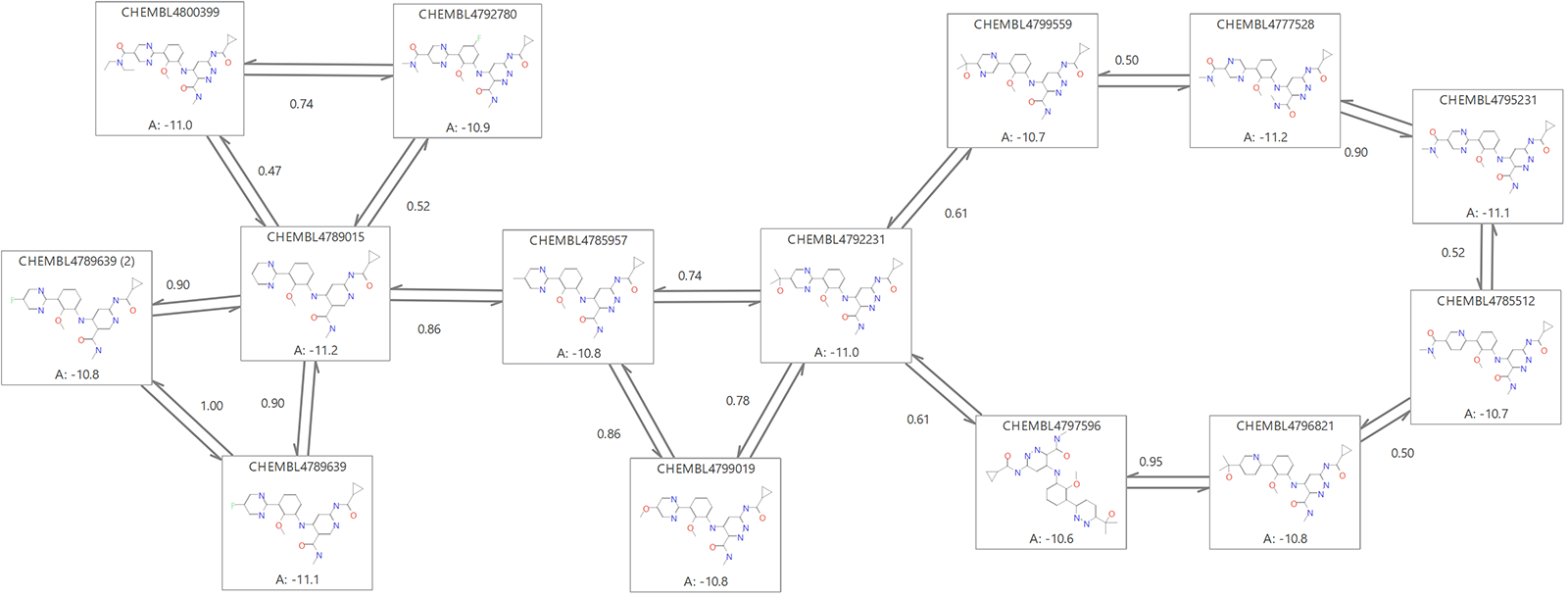Discovery
The business case for specialist modelers running your FEP calculations
What is FEP?
Free Energy Perturbation (FEP) calculations are an advanced technique that is used for accurate protein-ligand binding affinity predictions. More specifically, these calculations can predict either the relative binding energy for a series of related compounds or the absolute binding energy for unrelated structures. FEP does not necessarily inform you about which compounds to make, but prioritizes some of them, so that you can focus your valuable chemistry resources on those avenues which are likely to have favorable outcomes. FEP can be considered a more accurate method of predicting protein-ligand binding affinities in comparison to alternative structure-based scoring methods, such as MM-PB(GB)SA or WaterSwap.
The FEP Project
The two phases of an FEP project are:
Validation
The validation process uses known active molecules in their defined binding mode to assess the stability of the protein-ligand complex. This phase is a critical factor for a successful FEP calculation as it allows for early identification of problematic regions of the molecular systems and localized redevelopment of the protein-ligand model to improve the calculation in these regions.

Figure 1: Images of the FEP map for the validation and prediction of compound collections
Production
Once the required level of accuracy is reached in the set of compounds used in the validation phase, the production phase can begin. New compounds with unknown activities (prediction compounds) are imported, and a new extended FEP map is generated. The inclusion of the prediction compounds into this expanded map enables additional FEP calculations to be deployed to predict their activity and hence rank them for synthesis or purchase.
Why assign Cresset Discovery expert molecular modelers to your FEP project?
The most compelling arguments for assigning our specialist modelers to your FEP project are the cost and time considerations.
Hardware configuration and cost
The hardware cost of an FEP calculation is dependent upon the resources available if you are lucky enough to have your own CPU or GPU cluster this reduces the cost. If internal computing resources are not available then cloud computing resources like AWS (Amazon Web Services) are a viable alternative. Whichever hardware solution you choose you need to consider configuration of internal resource or setup and configuration of the AWS solution. These are time and cost considerations for the hardware aspect of a FEP calculation.
We can support or completely manage your FEP project using either our in-house cluster or CPU/GPU resources and associated software configured on a cloud-managed service.
Specialist expertise
It's important to fully understand and configure the protein ligand systems under investigation. This requires correct preparation of the protein ligand system, ensuring the stability of the ligand binding mode. The successful application of FEP is highly dependent on the quality of the protein ligand system preparation which requires experience of this method.
Our dedicated team of computational scientists, including expert computational chemists, FEP specialists, application scientists and software developers have the skills and expertise to run your FEP project.
Is FEP suitable for your project?
Deciding if FEP is suitable for your project can be challenging. The answer can change as this area of research is a continually growing field, and the strategy is still largely dependent upon your system and associated data. We have a deep understanding of the theory and method implementation, allowing us to identify the best approach to accelerate your project forward.
Free confidential discussion
Contact us for a free confidential discussion, to see if FEP can advance your project.
Discovery
Contact us for a free confidential discussion
We help you reach your next milestone faster and more cost effectively
Contact us for a free confidential discussion